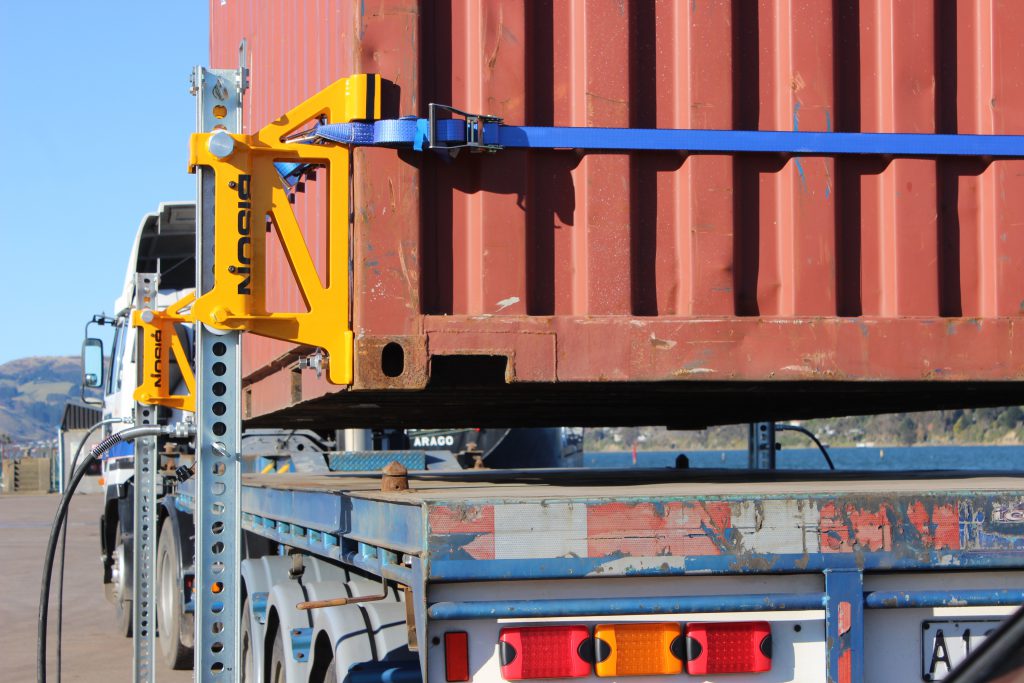Portable Container Lift System Offers Compact Alternative
10th August 2017

Container tech company BISON has launched the C-Lift P32 – a portable container lift system that it says “equips shipping, logistics and military operators to lift containers in any location”.
Recognising that conventional container handling equipment is typically big, heavy and expensive, New Zealand-based BISON has introduced a compact, portable and more economic alternative aimed at extending the benefits of intermodal logistics to new frontiers. The P32 is easily transported between sites, sets up in minutes and allows containers of all sizes and weights up to 32 tonne (70,000 lb) to be lifted on and off trailers safely and efficiently.
“A big challenge if you want to lift containers outside of a freight hub is finding suitable equipment to do the job” says Greg Fahey, BISON’s CEO. “So often, the size or weight of the container, space restrictions on site, or simply a lack of suitable equipment in the area, mean that cargo movements are compromised or costs are unreasonably high.”
BISON developed the P32 to solve this problem and sees the P32 as opening up a range of new possibilities for container freight and logistics.
Importers and exporters can lift and ground containers more economically in factories or warehouses. This can allow container stuffing or unloading in better locations. Or ease the pressure of live loading and chassis detention costs. Military, aid and project logistics operators can use the P32 to get containers in and out of remote locations more easily, avoiding reliance on local infrastructure. BISON is also fielding interest from construction and removals firms, wanting a mobile solution for delivering and collecting full containers at construction and urban sites.
A key part of the P32 design is BISON’s patent pending lift and lock mechanism, which reduces the size of the hydraulic system considerably, but still enables heavy containers to be elevated 1.65 metres (65 inches) off the ground. This in turn reduces the size, weight and cost of the system.

